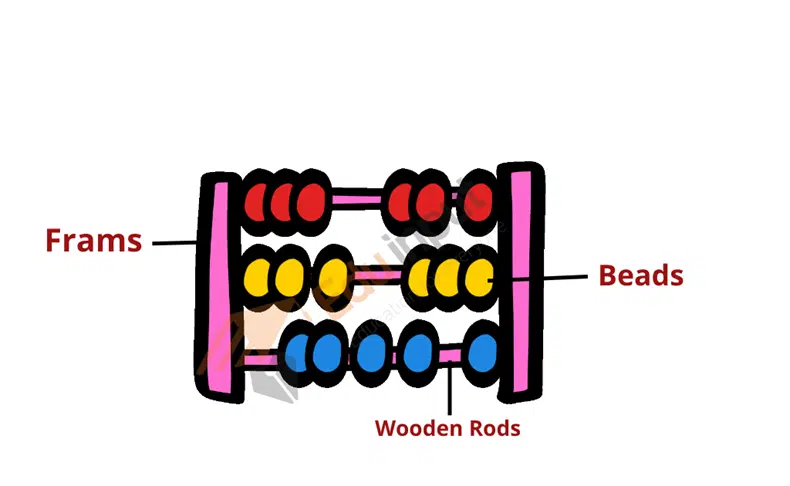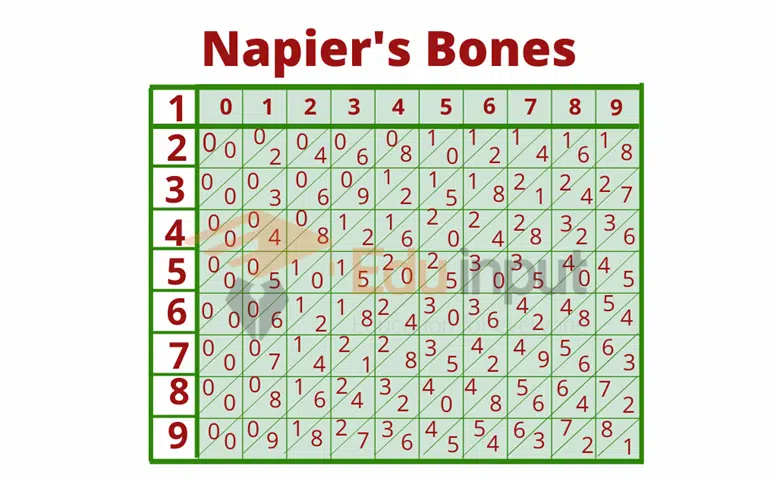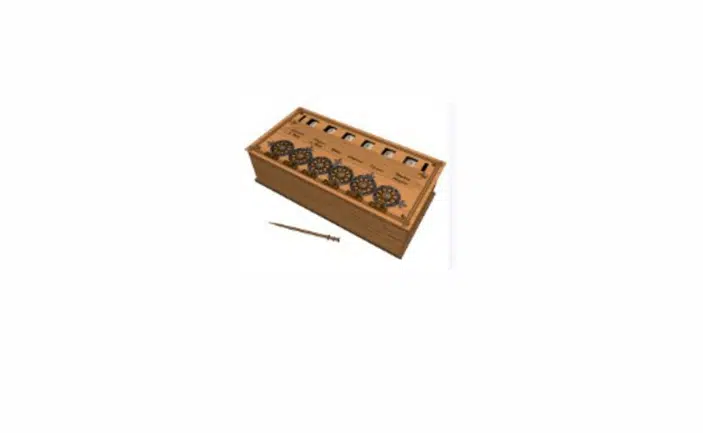History of Computer and Early Calculating Devices
Humans first used hands, stones, and sticks for counting. The abacus, invented over 5000 years ago, was the first known calculating device. Later, mechanical devices like Napier’s Bones and Pascal’s Calculator improved arithmetic. The Difference Engine and Analytical Engine introduced automation. ENIAC and Von Neumann’s architecture transformed computers into powerful machines.
History of Computer
The history of computer began with simple tools for arithmetic. The earliest computing devices helped people count and calculate. The early counting methods used objects like stones and tally marks. The first calculating device was the abacus, used over 5000 years ago. [1]
The history of computing devices advanced with mechanical calculators. The history of computer Napier’s Bones introduced logarithms for faster calculations. The early calculating devices like Pascal’s Calculator and Leibniz’s Step Reckoner improved accuracy.
The evolution of calculating devices led to electronic machines. The early computing devices like the Atanasoff-Berry Computer (ABC) and ENIAC changed technology. The early computer devices used transistors and microprocessors to become faster.
The earliest calculating devices are the foundation of modern systems. The history of calculating devices shows progress from the abacus history of computer to today’s digital machines. The evolution of the computer from abacus to present transformed computing into an essential part of life.
Different Types of Calculating Devices
Here is List of Early Calculating Devices :
- Abacus
- Napier’s Bones
- Pascaline
- Difference Engine
- Analytical Engine
- Hollerith’s Punched Card Machine
- ENIAC
- Von Neumann Architecture
- Clay Tray
- Lebombo Bone
Different Calculating Devices and Their Inventors
- Abacus – Inventor unknown (used in China, Japan, and Mesopotamia)
- Napier’s Bones – John Napier (1617)
- Pascaline – Blaise Pascal (1642)
- Difference Engine – Charles Babbage (1822)
- Analytical Engine – Charles Babbage (1844)
- Hollerith’s Punched Card Machine – Herman Hollerith (1890)
- ENIAC – Mauchly & Presper Eckert (1946)
- Von Neumann Architecture – John von Neumann (1945)
Some Early Calculating Methods
The list of early calculating devices includes the Lebombo bone, Ishango bone, and clay tray, which were among the earliest computing devices used for counting. These simple tools led to the invention of mechanical calculating devices and later, advanced computers.
LEBOMBO bone and ISHANGO bone
The Lebombo Bone was discovered between 35,000-30,000 BC. The Ishango Bone was discovered around 22,000 BC. These bones are among the earliest computing devices examples used for basic arithmetic and measurement. The Lebombo Bone has 29 clear notches and was used for length measurement.
Clay tray
It is the method in which clay is used for the calculation. Sumerians were an old tribe who invented this method. They used the clay of the pond and converted it into the tray which was later on named “clay tray”.
A stick was used as a tool to write on it. After the calculations, the tray was reset by shaking it.
Early Calculating Devices
The history of computers began with the birth of the Abacus.
ABACUS
The Abacus was the first early calculating device, invented almost 5000 years ago. Depending on the region, it had different names: Suanpan in China and Soroban in Japan.
It was a wooden tool consisting of a central beam, wires, and beads, used for addition, subtraction, multiplication, and division. The Abacus vs. Napier’s Bones vs. Pascaline comparison shows that the Abacus was the simplest manual computing device, followed by more mechanical calculating machines.

Napier’s bones
In 1617, John Napier invented Napier’s Bones, a manually operated mechanical calculating device. It consisted of rectangular rods made of carved bones and was used for addition, subtraction, multiplication, division, and square roots. It was one of the five early calculating devices that influenced the development of mechanical computers.

PASCALINE
The Pascaline was the first mechanical calculating machine, invented by Blaise Pascal in 1642 at the age of 19. Pascal developed this device to assist his father, a tax collector, who struggled with complex calculations.
The Pascaline performed addition and subtraction using rotating wheels and gears. It required a pen to start the calculations. The Pascaline vs. Abacus comparison highlights that it was a more advanced mechanical device, moving towards automated computing.
This device only performs addition and also subtraction. It consists of a wheel and gears which rotate to perform calculations. To start this device pen was used.

Difference engine
The Difference Engine was a mechanical calculating device designed by Charles Babbage in 1822, who is known as the Father of the Computer. It was built to perform polynomial calculations and was expected to be 8 feet tall, consisting of around 25,000 mechanical parts.
Unfortunately, due to funding issues, it remained unfinished during Babbage’s lifetime. However, in 1989-1991, his design was completed based on his original blueprints. The Difference Engine was completed using the paperwork of Charles by his student in 1989_1991.
The Analytical Engine
The Analytical Engine, designed by Charles Babbage in 1844, was the first general-purpose computing device. It featured:
- Input and output mechanisms
- Processing unit (like a CPU)
- Memory for data storage
- Programmable instructions
This machine introduced the concept of stored-program computing, making it the ancestor of modern computers. The Analytical Engine vs. Difference Engine comparison shows that the Analytical Engine had a more advanced computing mechanism.
HOLLERITH’S PUNCHED CARD MACHINE
The Hollerith Punched Card Machine was invented by Herman Hollerith to solve the census data problem in the United States.
- In 1790, the U.S. census had fewer than 4 million people, making manual counting possible.
- By 1890, the population had grown to 63 million, making manual data recording difficult.
Hollerith’s electromechanical device used punched cards to store and read data, introducing the concept of machine-readable storage in computing.
ENIAC
The ENIAC was the first fully electronic computer, designed by John Mauchly and J. Presper Eckert. It was financed by the U.S. Army for military calculations.
- Executed 5000 instructions per second
- Used 70,000 resistors
- Required 140 KW of power
Although ENIAC vs. mechanical computers showed that it was faster, its high energy consumption made it impractical for widespread use.
VON NEUMAN
The modern computer architecture is based on the stored-program concept introduced by John Von Neumann.
- Programs and data are stored in memory
- The computer automatically fetches and processes instructions
- Led to the development of modern digital computers
The Von Neumann architecture vs. early computing devices comparison shows that it revolutionized how computers process information, leading to the development of today’s computer systems.
Comparison of Early Computing Devices
| Device | Year | Operations |
| Abacus | ~5000 BC | Addition, subtraction, multiplication, division |
| Napier’s Bones | 1617 | Addition, subtraction, multiplication, division (not typically square roots) |
| Pascaline | 1642 | Addition and subtraction (not multiplication or division) |
| Difference Engine | 1822 | Polynomial functions (automated mathematical tables) |
| Analytical Engine | 1833 (not 1844) | General-purpose computing with arithmetic logic unit and memory capabilities. It was not built during Babbage’s lifetime. |
| Hollerith’s Punched Card Machine | 1886 (first patent), used in 1890 census | Census calculations through punched cards for data processing. |
| ENIAC | 1946 | Electronic calculations |
FAQs
Which was the first calculating device?
The Abacus was the first calculating device.
Which early computing device was the first to perform all four operations?
Napier’s Bones was the first to perform addition, subtraction, multiplication, and division.
What device changed calculating machines into computers, and when?
The Von Neumann Architecture in 1945 transformed calculating machines into computers.
What calculations did the first computers perform?
The ENIAC performed military and scientific calculations.
Which early computing device assisted with multiplication and division?
Both Napier’s Bones and the Pascaline assisted with multiplication and division.
What is Chronological Order of Early Computing Machines?
This is Chronological Order of Early Computing Machines, which highlights the evolution of mechanical calculating devices leading to modern computers.:
Abacus (~5000 BC)
Napier’s Bones (1617)
Pascaline (1642)
Difference Engine (1822)
Analytical Engine (1844)
Hollerith’s Punched Card Machine (1890)
Von Neumann Architecture (1945)
ENIAC (1946)
Abacus (~5000 BC)
Napier’s Bones (1617)
Pascaline (1642)
Difference Engine (1822)
Analytical Engine (1844)
Hollerith’s Punched Card Machine (1890)
Von Neumann Architecture (1945)
ENIAC (1946)





Leave a Reply